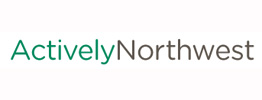 By Alison Acerra, MS, RD
By Alison Acerra, MS, RD
Wheat allergies are often confused with a wheat intolerance (typically resulting in mild to moderate GI distress) and celiac disease (an auto-immune disease that can cause serious complications such as malnutrition and intestinal damage). What these conditions have in common is the need to avoid wheat (and for celiac patients, the list of avoidances includes all gluten-containing products, found not only in wheat, but barley, rye and sometimes oats.)
Currently there are no minimum thresholds listed for the Top 8 allergens. That’s about to change with the new Food and Drug Administration (FDA) Gluten Labelling rule that goes into effect in September 2014. This rule will require food manufacturers to avoid using the term “gluten-free” to describe any products that have more than 20ppm gluten – good news for individuals with severe wheat allergies and celiac sprue!
While wheat is a very common ingredient in the food supply, there are many whole food alternatives available. Be cautious of processed wheat/gluten-free products on the market which are low in fiber and nutrients, while high in added sugars, fats and/or salt. They are not necessarily healthy options!
Here is a quick guide to help you sort out the wheat, from the wheat-free. Remember, wheat is considered one of the Top 8 and is therefore identified on the food labels of packaged products.
| Contains Wheat
Bread crumbs, bulgur, cereal extract, couscous, cracker meal, durum, einkorn, emmer, farina, flour, kamut, matzo, pasta, seitan, semolina, spelt, sprouted wheat, triticale, wheat, wheat germ (oil), wheat grass, wheat protein isolate, soy sauce |
Wheat-Free
Amaranth, arrowroot starch, barley (contains gluten), rye (contains gluten), beans, rice, buckwheat, hominy, egg noodles, peas, lentils, corn, cornstarch, millet, potatoes, quinoa, sorghum flour, tamari, tapioca |
Food allergies can be difficult to manage, but the good news is that government regulations and technology are making it easier for individuals to avoid triggering foods. If you have any questions about how to manage your food allergy, consider consulting with a Registered Dietitian who can help you create a sustainable plan that works for your lifestyle.
—
Alison Acerra, MS, RD, is the national nutrition and wellness manager for Guckenheimer, a food service organization that is focused on the impact of food on wellness in the workplace. Alison has worked in a variety of clinical settings at high profile Silicon Valley companies and specializes in weight management, cardiovascular disease and diabetes prevention and management, as well as culinary nutrition.








September 2, 2014 at 6:03 am
This post is really good to read. Amazing!!
Thank you for sharing, can I post it on my Twitter to share to my friends?
LikeLike